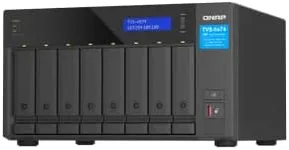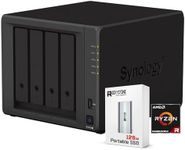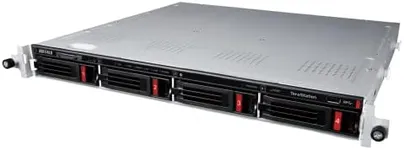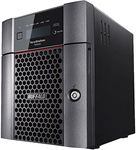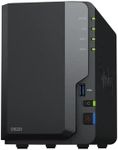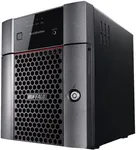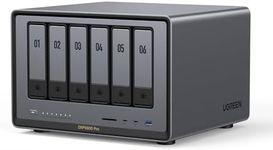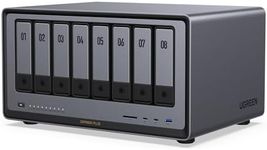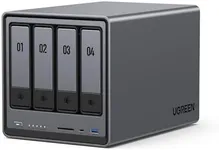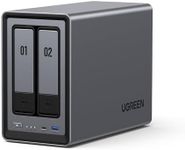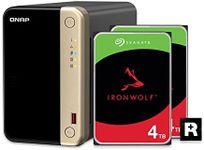Buying Guide for the Best Nas Devices
When choosing a NAS (Network Attached Storage) device, it's important to consider your specific needs and how you plan to use the device. NAS devices are used for storing and sharing data across a network, making them ideal for both personal and business use. They can serve as a central hub for your files, backups, and media, accessible from multiple devices. To make an informed decision, you should understand the key specifications and how they align with your requirements.Storage CapacityStorage capacity refers to the total amount of data that the NAS device can hold. This is important because it determines how much data you can store and share. Storage capacity is usually measured in terabytes (TB). If you have a large amount of data, such as high-resolution videos or extensive backups, you will need a NAS with higher storage capacity. For personal use, 2-4 TB might be sufficient, while small businesses might need 8-16 TB or more. Consider your current data needs and future growth when choosing the storage capacity.
Number of BaysThe number of bays in a NAS device indicates how many hard drives it can accommodate. This is important because it affects the total storage capacity and the ability to configure RAID (Redundant Array of Independent Disks) for data redundancy and performance. NAS devices typically come with 1 to 8 bays. For basic home use, a 1-2 bay NAS might be enough. For more advanced users or small businesses, a 4-8 bay NAS allows for greater storage capacity and more RAID options. Choose the number of bays based on your storage needs and desired level of data protection.
Processor and RAMThe processor and RAM in a NAS device determine its performance and ability to handle multiple tasks simultaneously. A more powerful processor and higher RAM are important for tasks such as media streaming, running applications, and handling multiple users. Entry-level NAS devices may have a basic processor and 1-2 GB of RAM, suitable for simple file storage and sharing. For more demanding tasks, look for a NAS with a multi-core processor and 4-8 GB of RAM or more. Consider the types of tasks you will be performing and the number of users accessing the NAS when choosing the processor and RAM.
RAID SupportRAID (Redundant Array of Independent Disks) is a technology that combines multiple hard drives into a single unit to improve performance and provide data redundancy. RAID support is important for data protection and reliability. Common RAID levels include RAID 0 (striping), RAID 1 (mirroring), RAID 5 (striping with parity), and RAID 6 (double parity). For personal use, RAID 1 or RAID 5 might be sufficient to protect against data loss. For business use, RAID 5 or RAID 6 offers better data protection and performance. Choose a NAS with RAID support that matches your need for data redundancy and performance.
ConnectivityConnectivity options on a NAS device determine how it can be accessed and integrated into your network. Important connectivity features include Ethernet ports, USB ports, and sometimes Wi-Fi. Ethernet ports are essential for connecting the NAS to your network, with Gigabit Ethernet being the standard for fast data transfer. USB ports allow for connecting external drives and other peripherals. Some NAS devices also offer Wi-Fi connectivity for wireless access. Consider your network setup and how you plan to access the NAS when evaluating connectivity options.
Software and FeaturesThe software and features provided by a NAS device can greatly enhance its functionality. This includes the operating system, user interface, and additional applications for tasks such as media streaming, file synchronization, and backup. A user-friendly interface and robust software ecosystem are important for ease of use and maximizing the NAS's capabilities. Look for features such as remote access, mobile apps, and integration with cloud services. Consider what additional features you need and how they will benefit your use case when choosing a NAS device.
Power ConsumptionPower consumption refers to the amount of electricity the NAS device uses. This is important for both cost and environmental considerations, especially if the NAS will be running 24/7. NAS devices with more powerful processors and multiple hard drives typically consume more power. Look for energy-efficient models that offer features such as scheduled power on/off and hard drive hibernation. Consider the power consumption in relation to your usage patterns and the potential impact on your electricity bill.
